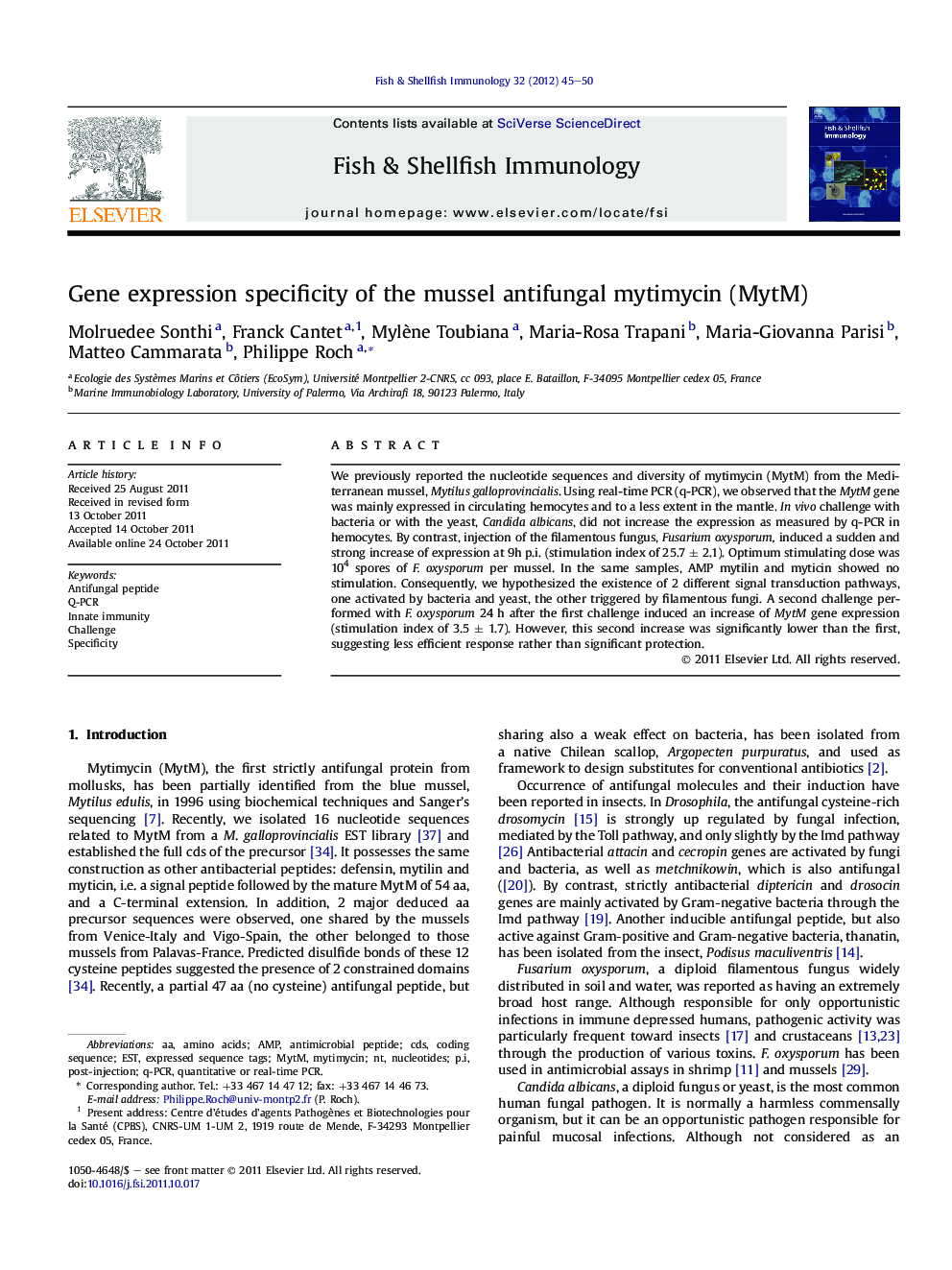| کد مقاله | کد نشریه | سال انتشار | مقاله انگلیسی | نسخه تمام متن |
|---|---|---|---|---|
| 2432388 | 1106793 | 2012 | 6 صفحه PDF | دانلود رایگان |

We previously reported the nucleotide sequences and diversity of mytimycin (MytM) from the Mediterranean mussel, Mytilus galloprovincialis. Using real-time PCR (q-PCR), we observed that the MytM gene was mainly expressed in circulating hemocytes and to a less extent in the mantle. In vivo challenge with bacteria or with the yeast, Candida albicans, did not increase the expression as measured by q-PCR in hemocytes. By contrast, injection of the filamentous fungus, Fusarium oxysporum, induced a sudden and strong increase of expression at 9h p.i. (stimulation index of 25.7 ± 2.1). Optimum stimulating dose was 104 spores of F. oxysporum per mussel. In the same samples, AMP mytilin and myticin showed no stimulation. Consequently, we hypothesized the existence of 2 different signal transduction pathways, one activated by bacteria and yeast, the other triggered by filamentous fungi. A second challenge performed with F. oxysporum 24 h after the first challenge induced an increase of MytM gene expression (stimulation index of 3.5 ± 1.7). However, this second increase was significantly lower than the first, suggesting less efficient response rather than significant protection.
► Antifungal mytimycin gene was expressed mainly in hemocytes.
► No increased expression following bacteria or yeast challenges.
► Sudden and strong increase following injection of filamentous fungus.
► A second challenge induced also an increase but lower than the first one.
Journal: Fish & Shellfish Immunology - Volume 32, Issue 1, January 2012, Pages 45–50